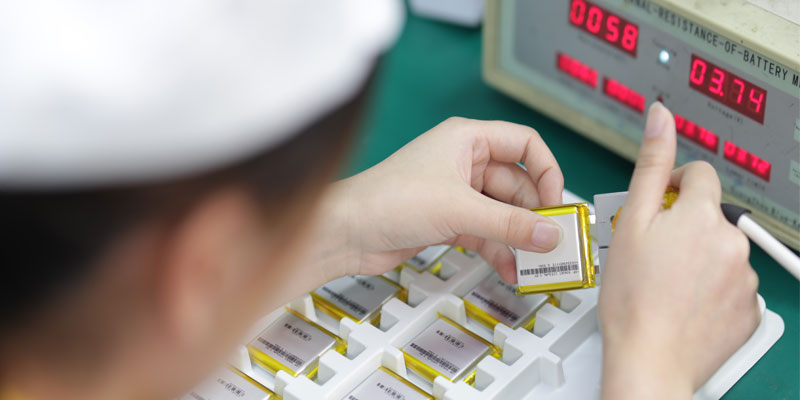6 Important Parameters for the Design-In of Lithium Polymer Batteries
A standardized battery fits into any compatible compartment – after all, that’s why standards are defined. Depending on the application, however, button cells and cylindrical batteries reach their limits.

A Smartwatch, for example, has a significantly higher energy consumption than an ordinary wristwatch. A simple button cell is therefore far from sufficient to cover the device’s power requirements. However, the case of the watch is far too small for a powerful lithium-ion battery. Only a lithium polymer battery is capable of meeting the specific requirements of a Smartwatch.
Flexible product design
Lithium polymer technology is a match to lithium ion batteries in terms of performance, but is much more flexible in terms of design and size. The reason for this is the absence of a solid metal housing, as is common with lithium-ion batteries. Instead, the cells are merely enclosed by a thin layer of plastic-laminated aluminum foil. Thanks to the sandwich-like structure of the battery cells, even curved or ultra-flat designs with a thickness of less than one millimeter are conceivable.
For product developers and designers, the great flexibility of Lithium-Polymer batteries is a blessing. Conversely, the new design freedom can also lead to uncertainty. It is therefore advisable to take battery developers such as Jauch Quartz GmbH on board at an early stage for new developments.
The following six parameters must be defined at an early stage if design-in is to be successful.
1) Voltage
The average single cell voltage for lithium polymer cells is 3.6 volts as standard. The switch-off voltage is 3.0 volts and the maximum charging voltage is 4.2 volts. If a higher voltage is required, several cells can be connected in series. A parallel connection of several cells also makes it possible to increase the capacity.
2) Currents
In addition to the voltage, the current requirement of the application must also be defined. The average continuous currents must be specified as well as the maximum pulse currents and pulse lengths. The inrush currents and their lengths must also be taken into account.
3) Temperature
In connection with the current power load profiles of the application, the temperatures at which they are used must also be taken into consideration. By default, lithium polymer cells are designed for a temperature range between -20 and 60 degrees Celsius. Temperatures between 0 and 45 degrees Celsius should prevail when charging the cells.
Special cells are available for use under extreme temperature conditions above or below this range.
4) Dimensions of the Battery Compartment
Of course, the dimensions of the battery compartment must also be defined in advance. It is important to remember that lithium polymer cells expand over time. This “swelling” phenomenon is responsible for the cells to become up to 10% thicker over time. Accordingly, the battery compartment should be generously dimensioned. In addition, sharp edges or the like in the immediate vicinity of the battery compartment must be avoided at all costs so that the battery is not damaged.
5) Capacity
The capacity of a battery indicates the amount of electrical charge that a battery can store or release. Capacity is determined by voltage, current consumption, temperature and the available space in the battery compartment.
6) Safety
To protect lithium polymer batteries from overcharging, deep discharge or short circuits, they are equipped with individually programmable protection electronics. In order to optimally adapt this so-called “battery management system” to the respective application, individual switch-off values for the system are defined.
In addition, batteries must meet certain norms and safety standards to ensure that the applications are approved. Strict regulations apply here – understandably – especially in the field of medical technology.
Based on these six parameters, Jauch’s battery experts will find the right lithium polymer battery solution for every application. In order to guarantee optimum results, however, contact should be made as early as possible in the design-in phase. Otherwise, the desired battery solution may not be available or feasible.


